
Sam the zookeeper has the job of feeding the animals every day at three o’clock. Could Sam have forgotten to feed Elephant, the other zoo animals wonder. Follow Sam on his rounds — with bananas for the monkeys, red berries for the bear, a fish for the seal (“Deliciously good!” barks Seal).
Sam Who Never Forgets

An indispensable teacher resource and course text, this book presents evidence-based practices for helping all K-12 students develop their skills as writers. Every chapter draws clear connections to the Common Core State Standards. Leading authorities describe how to teach the skills and strategies that students need to plan, draft, evaluate, and revise multiple types of texts. Also addressed are ways for teachers to integrate technology into the writing program, use assessment to inform instruction, teach writing in the content areas, and tailor instruction for English language learners and struggling writers. Helpful case examples are featured throughout.
Best Practices in Writing Instruction, Second Edition

Encouraging kids to talk about their favorite books is a powerful learning tool that can motivate and inspire. This book helps educators and parents navigate the world of children’s literature. This comprehensive, multicultural, annotated booklist is organized around themes germane to a children’s world. Teachers will find suggestions on how to integrate these books into their curriculum. Parents can use the books as a suggested reading list to foster lively discussion and self-exploration among their young readers. Whether at home or in the classroom, it’s easy to stir up a buzz about books!
Books Your Kids Will Talk About!
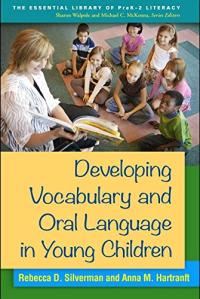
This book presents the most effective instructional strategies for promoting vocabulary growth in the early grades, when the interdependence of word learning and oral language development is especially strong. The authors guide teachers in choosing the best materials and in fostering home-school connections, and share six key principles for building vocabulary. Included are guiding questions; text boxes connecting vocabulary to the Common Core State Standards; examples from real teachers; reproducible checklists, rubrics, and other tools; and an appendix of additional vocabulary resources.
Developing Vocabulary and Oral Language in Young Children (The Essential Library of Prek-2 Literacy)

The authors — leading experts in neuropsychology and special education — present a unique model of learning disabilities that integrates the cognitive, neural, genetic, and contextual factors associated with these disorders. The volume addresses classification, assessment, and intervention for a range of disabilities involved in reading, mathematics, and written expression. With a focus on exploring the evolving scientific base of the field, as well as establishing effective educational practices, this book will serve as an essential text and an indispensable resource for school psychologists, neuropsychologists, special educators, and others who work with struggling learners.
Learning Disabilities: From Identification to Intervention

Through the eyes of parents and educators who have succeeded in their own struggles to change the educational system, the book provides the reader with the tools and knowledge for transforming the way reading is taught in their children’s classrooms. This book takes the reader step-by-step through an understanding of the research on reading and ways in which a single, determined person can make a difference in the learning ability of every student in our nation’s schools. Part One is a series of chapters written by individuals who discuss what they experienced during these battles and what made them successful. Part Two is written by a series of experts who describe how they have overcome the challenges involved in creating widespread change in school systems. The appendix is filled with resources — people, places, sample tools, a glossary, and bibliography to help the reader.
Why Kids Can’t Read: Challenging the Status Quo in Education

“Human beings were never born to read,” writes Tufts University cognitive neuroscientist and child development expert Maryanne Wolf. Reading is a human invention that reflects how the brain rearranges itself to learn something new. In this provocative book, Wolf chronicles the remarkable journey of the reading brain not only over the past five thousand years, since writing began, but also over the course of a single child’s life, showing in the process why children with dyslexia have reading difficulties and singular gifts.
Proust and the Squid: The Story and Science of the Reading Brain
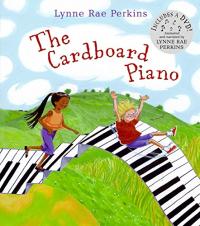
This lively picture book shows that friends can have differences and disappointments without becoming enemies. Best friends and neighbors Debbie and Tina are alike in many ways, and the warm, lively, ink-and-watercolor pictures show them having lots of fun together: dressing up, cycling, watching a spooky movie at a sleepover, and more.
The Cardboard Piano

This story reads like a series of intersecting vignettes, all focused on 14-year-old Debbie and her friends as they leave childhood behind. The descriptive, measured writing includes poems, prose, haiku, and question-and-answer formats. Perkins brings a great deal of humor to this gentle story about a group of childhood friends facing the crossroads of life and how they wish to live it. (2006 Newbery Medal Winner)
Criss Cross
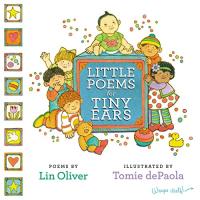
For babies and toddlers, each moment is full of wonder and discovery. This delightful collection of original poems celebrates the everyday things that enthrall little ones, such as playing peekaboo, banging pots and pans, splashing at bath time, and cuddling at bedtime. Full of contagious rhythm and rhyme, this inviting picture book introduces young children to the sound of poetry.
Little Poems for Tiny Ears
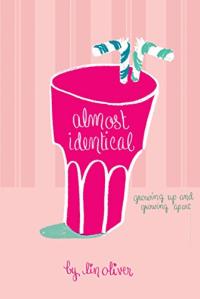
Identical twins Sammie and Charlie are starting out seventh grade at a brand-new school. As they make new friends, and join different clubs, the sisters (and once inseparable best friends) start to grow further and further apart. Told from Sammie’s point of view, this moving yet funny story will be gobbled up by middle-school girls! This is the first book in the Almost Identical series.
Almost Identical
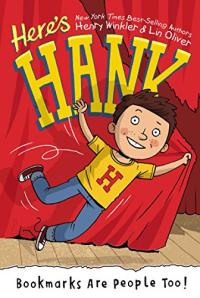
Hank is a second-grade kid who doesn’t try to be funny, but he somehow always makes the kids in his class laugh. He’s pretty bad at memorizing stuff, and spelling is his worst subject. (But so are math and reading!) Hank’s class is putting on a play, and Hank wants the lead part: Aqua Fly. But he freezes in his audition and can only buzz like a fly. His teacher creates a special part for Hank, a silent bookmark. This may seem like an insignificant role, but when his enemy, Nick McKelty, freezes during the performance, it’s up to Hank to save the play! This is the first book in the Here’s Hank series.
Bookmarks Are People Too! (Here’s Hank)

Meet Daniel Funk, a regular guy who’s stuck living in a house full of girls. Why couldn’t he have a brother instead of all those sisters? That would be so cool. When Daniel shrinks to the size of the fourth toe on his left foot, he discovers that he actually does have a brother. A little brother. A very little brother. He’s Pablo Funk, Daniel’s tiny twin, who is a toeful of trouble. When Daniel and Pablo decide to have some fun at their sisters’ party and let loose a giant hissing cockroach just to watch the girls scream, they find out that it’s dangerous to be so small. This is the first book in the Daniel Funk series.
Attack of the Growling Eyeballs (Who Shrunk Daniel Funk?)

The book showcases the authors guidance for administrators, teachers, parents, and concerned citizens about how best to serve the literacy needs of students of color. Hunter addresses twelve pivotal understandings and practices that encourage successful reading — from reading comprehension to Response to Intervention to oral language development and family involvement — that every educator who works with a diverse student population should understand. As Ms. Hunter maintains, “Reading is a civil right.”
It’s Not Complicated! What I Know for Sure About Helping Our Students of Color Become Successful Readers
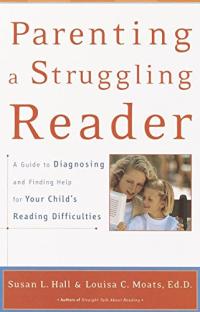
A comprehensive, practical guide for recognizing, diagnosing, and overcoming any childhood reading difficulty. Provides a four-step plan for identifying and resolving deficiencies, as well as advice for those whose kids received weak instruction during the crucial early years,
Parenting a Struggling Reader
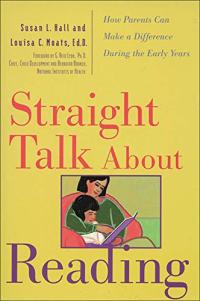
Today’s parents are increasingly concerned about the reading and spelling skills taught in schools and are taking charge of their children’s education. Full of ideas and suggestions — from innovative preschool exercises to techniques that older children can use to increase reading speed and comprehension — Straight Talk About Reading will instantly help any parent lay a solid foundation for their child’s formative educational years.
Straight Talk About Reading: How Parents Can Make a Difference During the Early Years
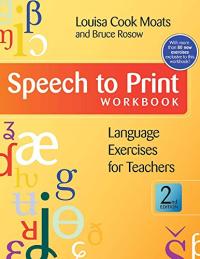
Instructors who use Speech to Print in teacher education courses now have a companion workbook for their students. This engaging, interactive workbook has an easy-to-use format and contains all the exercises in Speech to Print, plus bonus exercises, tables, and new consonant and vowel cards. Exercises include fill-in-the-blanks, multiple choice, matching activities, and transcription. Use this workbook to learn to recognize and understand the problems with language children may encounter, and discover strategies for teaching children reading, writing, speaking, and listening skills.
Speech to Print Workbook: Language Exercises for Teachers, Second Edition

Module 2 of LETRS: Language Essentials for Teachers of Reading and Spelling, this book introduces phonemes (speech sounds) and discusses the importance of phonological awareness in reading and spelling instruction. Module 2 also discusses the features of consonants and vowels and covers some of the problems that children who speak other languages or dialects may have when learning English.
The Speech sounds of English: Phonetics, Phonology, and Phoneme Awareness

It’s 1953 and 11-year-old Penny dreams of a summer of butter pecan ice cream, swimming, and baseball. This coming-of-age story is populated by a cast of vivid family characters and it explores the things that tear them apart and the things that bring them back together. The book includes an Author’s Note with photographs and additional background on World War II, Internment camps, and 1950s America.
Penny from Heaven
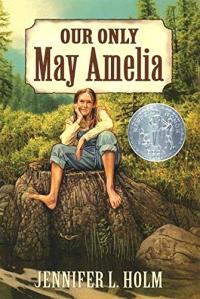
Twelve-year-old tomboy May Amelia Jackson, the youngest of seven children and the only girl in a Finnish immigrant family, lives in the wilderness along the Nasel River in Washington State in 1899. Through May Amelia’s travels, readers witness the diverse ways of life in the expanding West: peaceful relations with the Chinook Indians, the dangers posed by the neighboring logging camp, her aunt’s life in the nearby boomtown of Astoria, Oregon, as well as the rhythms of the seasons.
Our Only May Amelia

Different woodpeckers swoop, slam, tap, click, and grow throughout the seasons. They are introduced in handsome collage illustrations and a rhythmic text which uses alliteration and onomatopoeia to bring the birds alive. Additional details and identification is included at the conclusion.
Woodpecker Wham!

Fourteen critters are presented here through well-placed photographs and fascinating factoids. From small (“the female tarantula lays 500 to 1000 eggs in a silken sac…”) to tall (“a giraffe’s tongue is black”), to up in the air (the hummingbird) or down in the water (a seahorse), this book is fun and informative.
Weird and Wild Animal Facts

A poetic, playful look at an orangutan family in the wild takes as they dance their way through the trees of the rainforest. A poetic form called the “tanka” combines with animated illustrations for a jaunty glimpse of these appealing primates.
Orangutanka

The octopus is not only intelligent, it can be remarkably adaptable able to change color, shape and even skin texture. This fascinating overview is illustrated with attractive watercolors and includes additional detail in back matter. For older readers (ages 9 to 12), The Octopus Scientists (opens in a new window) by Sy Montgomery with photographs by Keith Ellenbogen follows octopus scientist, Jennifer Mathers, and her international team as they learn about and try to better understand this clever creature.
